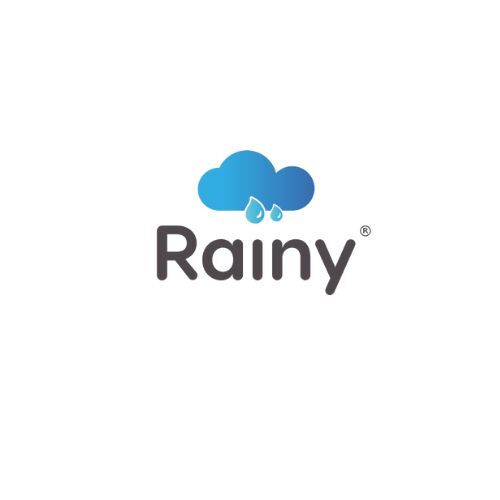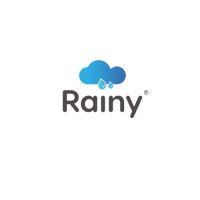Exploring Different Types of Rainwater Harvesting Systems

Strong 8k brings an ultra-HD IPTV experience to your living room and your pocket.
As the global population continues to grow, the demand for water is increasing at an unprecedented rate. In many parts of the world, water scarcity is becoming a significant challenge, making the need for sustainable water management practices more critical than ever. One such practice is rainwater harvesting, which involves collecting and storing rainwater for later use. This method is not only environmentally friendly but also cost-effective and highly efficient. In this article, we will explore different types of rainwater harvesting systems, highlighting the innovative solutions offered by Farmland Rain Water Harvesting System.
Introduction to Rainwater Harvesting
Rainwater harvesting is the process of capturing, storing, and utilizing rainwater that falls on rooftops, open spaces, and other surfaces. This collected water can be used for various purposes, such as irrigation, flushing toilets, washing, and even drinking, after proper treatment. The primary goal of rainwater harvesting is to reduce dependency on traditional water sources, alleviate pressure on local water supplies, and promote sustainable water use.
Types of Rainwater Harvesting Systems
There are several types of rainwater harvesting systems, each designed to suit different needs and environments. Here, we will discuss the most common systems, showcasing how Farmland Rain Water Harvesting System provides innovative solutions for each type.
1. Rooftop Rainwater Harvesting
Description: Rooftop rainwater harvesting is one of the most widely used methods. It involves collecting rainwater that falls on the roof of a building and channeling it into storage tanks or cisterns through a series of gutters and downspouts.
Advantages:
Simple and cost-effective
Easy to install and maintain
Suitable for urban and rural areas
Farmland Solution: Farmland Rain Water Harvesting System offers a comprehensive rooftop harvesting kit that includes high-quality gutters, downspouts, and storage tanks. Their systems are designed to maximize water collection and ensure the water remains clean and free from contaminants.
2. Surface Runoff Harvesting
Description: Surface runoff harvesting involves collecting rainwater that flows over the ground surface during rainfall. This method is particularly useful in areas with hard surfaces, such as pavements and roads, where water cannot easily infiltrate the ground.
Advantages:
Effective in managing stormwater
Reduces soil erosion and flooding
Can be used to recharge groundwater
Farmland Solution: Farmland Rain Water Harvesting System provides innovative surface runoff harvesting solutions, including specially designed catchment areas and infiltration systems that capture and store runoff water efficiently.
3. Subsurface Harvesting
Description: Subsurface harvesting involves collecting and storing rainwater below the ground surface. This method typically uses infiltration galleries, trenches, or boreholes to capture water and direct it into underground storage.
Advantages:
Minimizes evaporation losses
Protects water from contamination
Enhances groundwater recharge
Farmland Solution: Farmland Rain Water Harvesting System’s subsurface harvesting solutions include advanced infiltration galleries and underground storage tanks designed to optimize water capture and maintain water quality.
4. Check Dams
Description: Check dams are small, temporary or permanent structures built across drainage channels to slow down the flow of water and promote infiltration into the ground. They are commonly used in hilly and semi-arid regions.
Advantages:
Reduces soil erosion
Enhances groundwater recharge
Supports agriculture and livestock
Farmland Solution: Farmland Rain Water Harvesting System offers durable and eco-friendly check dam solutions that are easy to construct and maintain. Their check dams are designed to withstand varying water flow rates and environmental conditions.
5. Rain Barrels
Description: Rain barrels are simple containers placed at the end of downspouts to collect and store rainwater from rooftops. They are ideal for small-scale water collection and can be used in residential settings.
Advantages:
Affordable and easy to install
Suitable for gardens and landscaping
Reduces stormwater runoff
Farmland Solution: Farmland Rain Water Harvesting System provides high-capacity rain barrels equipped with filters and overflow systems to ensure clean water collection and prevent mosquito breeding.
Benefits of Rainwater Harvesting
Implementing rainwater harvesting systems offers numerous benefits, including:
Water Conservation: Reduces the demand on traditional water sources and helps conserve valuable water resources.
Cost Savings: Lowers water bills by providing an alternative water source for non-potable uses.
Environmental Protection: Reduces stormwater runoff, minimizes soil erosion, and mitigates the impact of flooding.
Sustainable Agriculture: Provides a reliable water source for irrigation, supporting sustainable farming practices.
Conclusion
Rainwater harvesting is a vital practice for sustainable water management, offering a range of benefits for individuals, communities, and the environment. By exploring different types of rainwater harvesting systems, we can better understand how to effectively capture and utilize this precious resource. Farmland Rain Water Harvesting System stands out as a leader in providing innovative and efficient solutions for all types of rainwater harvesting needs. Their commitment to quality and sustainability ensures that we can all contribute to a greener and more water-secure future.
Note: IndiBlogHub features both user-submitted and editorial content. We do not verify third-party contributions. Read our Disclaimer and Privacy Policyfor details.


